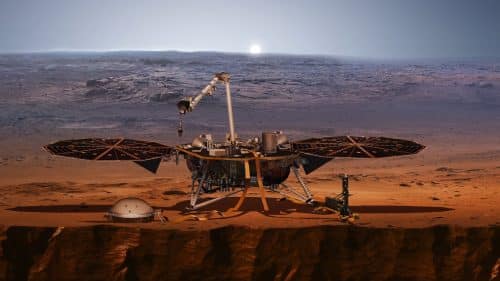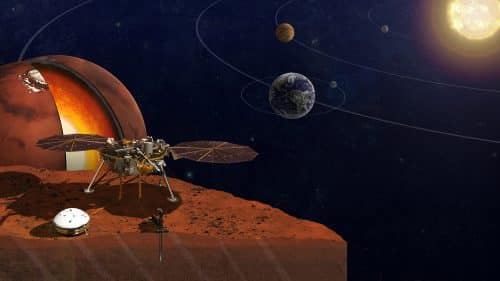Next year, NASA will launch the InSight lander to Mars, and invites you to add your name to the microchip that will be launched with the probe.

In May 2018, NASA will launch its next Mars rover, a lander known as InSight (InSight - "Insight", a rather complicated acronym for Interior Exploration Using Seismic Investigations, Geodesy and Heat Transport). Ahead of the launch, the space agency invites the general public, from all over the world, to add their name to the microchip that will be launched together with the lander.
Registration will be open until November 1, 2017, and can be done at this link: https://mars.nasa.gov/syn/insight
Although the addition of the name has no real meaning, it is a nice attempt by the space agency to share with the general public a mission whose scientific objectives may be "dry" at times.
This is a second microchip that will be attached to the spacecraft, after the agency ran an identical campaign in 2015, before its launch was delayed for two years. According to NASA, during the previous campaign, 827,000 people added their names. as per Campaign registrant data (the previous and the current), most of them come from the United States (about 300 thousand), with India behind it on the list with 65 thousand registrants and the United Kingdom with 53 thousand. Little Israel is far behind, with about 1,300 people registered from it.
As mentioned, the mission that was originally planned to be launched in 2016, postponed for two years Following a malfunction in the vacuum tank of the lander's seismograph, its main scientific instrument. The vacuum tank is supposed to protect the seismograph in the harsh conditions on the surface of Mars, but in the months before the initial launch target, repeated leaks were discovered from it, in a way that could damage the reliability of the seismograph's measurements.
The person in charge of the seismograph was the French Space Agency, which cooperates with NASA in the mission. Due to the leaks, the two space agencies decided to postpone the launch of the mission until the next launch window to Mars, which occurs roughly every two years.
During this period, the mission engineers were working on repairing the malfunction, when NASA took the responsibility on redesigning the vacuum tank. "We fixed the problem we had two years ago, and we are eagerly preparing for launch," said project manager Tom Hoffman of NASA's Jet Propulsion Laboratory (JPL).
The launch will be carried out on the Atlas 5 launcher, in a five-week launch window that will open on May 5, 2018.
The goal: exploring the depths of Mars

Insight will be identical in design to the "Phoenix" lander that was launched to Mars in 2008. Upon arrival at Mars, it will use a heat shield, a parachute and eventually rocket engines to make a soft landing on the ground, in the equatorial region of Mars. As with the Phoenix, two rounded solar panels will provide the lander's power consumption, and they will deploy as a fan after landing.
The main objective of the mission will be to study the internal structure of Mars, the first mission of its kind on the red planet. The mission researchers hope that the internal structure of Mars will help them better understand the initial processes that shaped all the rocky planets (Humper, Venus, Earth and Mars). According to the mission site, "Mars is large enough to undergo the initial processes of internal heating and differentiation (the separation between the planet's crust, mantle and core) that shaped the terrestrial planets, but small enough to preserve the imprint of these processes for 4 billion years." This is in contrast, for example, to the Earth, where processes such as plate tectonics have left no traces of those ancient processes.
"Since the surface of Mars has not undergone as much turbulence as Earth's over the past three billion years, it is likely that Mars preserves evidence of the rocky planets in their youth much better than Earth," explained the mission's principal investigator Bruce Benardt, from NASA's Jet Propulsion Laboratory.
The seismic waves measured by the seismograph device will make it possible to study the internal structure of Mars, using a method that is also used to study the internal structure of the Earth. The lander's seismograph will be so precise that it will be able to measure movements as small as half the diameter of a single hydrogen atom.
It is worth noting that InSight's seismograph will not be the first to be placed on Mars. Seismographs were already sent in 1975 aboard the Viking landers, the first landers to successfully land and operate on Mars. However, only on Viking 2 did the seismograph work, and its measurements were called into question due to the fact that it was placed on the lander itself and was affected by winds. In Insight, on the other hand, a robotic arm will place the seismograph on the ground, and it will have a cover to protect it from external factors such as wind.
Another experiment that Insight will place on the surface of Mars will be a device known as a "mole", whose task is to dig and place sensors at a depth of 5 meters below the surface, in order to measure the emission of heat from the core of Mars.
